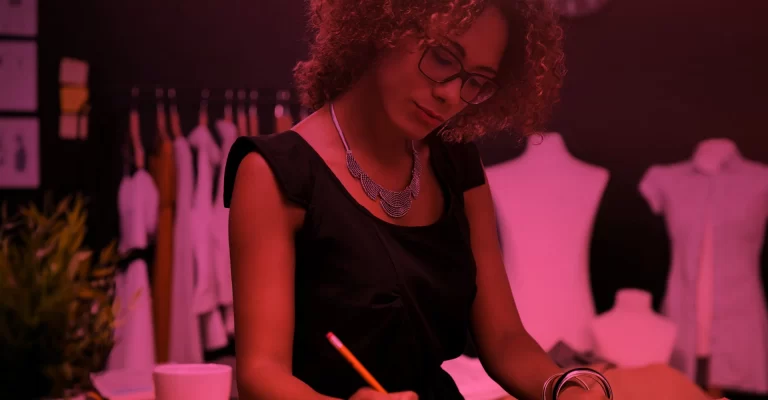THINK OUTSIDE THE BOX – Atlantic International University
August 25, 2022 2023-09-18 21:20THINK OUTSIDE THE BOX – Atlantic International University
“Think outside the box” is a popular phrase in the business sector, but it may also be applied to other aspects of life. It implies to think outside the box, to think outside the established norms and regulations, to think outside the set boundaries and standards.
“Thinking outside the box (also thinking out of the box or thinking beyond the box and, especially in Australia, thinking outside the square), is a metaphor that means to think differently, unconventionally, or from a new perspective. This phrase often refers to novel or creative thinking. The term is thought to derive from management consultants in the 1970s and 1980s challenging their clients to solve the nine dots puzzle, whose solution requires some lateral thinking”- Wikipedia
The origin of nine-dot puzzles can be traced back to 1914 or even before. The problem is an intellectual exercise that requires you to use a pencil to connect nine dots in a square design. The dots are to be connected with four straight lines, without lifting the pencil from the paper, until the last dot is joined.
The solution to the nine-dot puzzle is to draw lines that extend beyond the box; however, once found, it becomes clear that the solution is actually outside the box!
It is clear from the previous explanation that the phrase has more to do with problems and solutions. In this example, the box represents what we are used to, what we have been told is the proper way to deal with a problem, laws, and regulations, guidelines, risks, repercussions, rights and wrongs, feasible and impossible, causes and effects, and so on. The majority of these boxes represent teachings that have been passed down to us since we were children, therefore this is what we have always understood to be correct.
There are several counter-arguments to this statement. One writer claims that thinking outside the box is a flawed method of innovation because the phrase conjures up images of an imagined box that never existed, such as the nine-dot problem. The nine dots were all that existed until the four lines were drawn. The game’s participants limited the possible solutions to the spaces between the dots, forming an imaginary square. Even though they were not told not to, they did not perceive the white spaces outside the imaginary square. This act puts the participants in an unwanted, self-limiting scenario, preventing them from perceiving a feasible solution. He advised us to set the boxes on fire and act as if there was no box at all; after all, when faced with a threat, the human survival instinct is either fight or run; there is no in-between!
While some may agree with the previous argument, it is important to remember that the boxes are present in our daily lives, from our homes to our workplaces. We did not place these boxes there most of the time! We have been “boxed in”!
So, how do you think outside the “box” you have been “boxed in”?
- If the problem is related to your workplace, go to the library and search online for similar problems in other places, and industries unrelated to yours to see how such issues were handled. The solution might however require combining two options from your findings; be creative and explorative!
- Learn new things and expand your knowledge by taking courses that are unrelated to your current work. You never know when this will come in handy. Inquire, ask questions, and train your mind!
- Every book contains one or more lessons that can be applied to various life challenges. Do not wait until you encounter a challenge: read books or novels and pay attention to the problems and solutions in the story.
- It is said that the left side of our brain is more creative and rational than the right side of our brain, and writing is one way to develop the left side of our brain. Don’t just read; write a poem about the problem at hand, and then write down the solution you learned from your reading. The faintest ink is more potent than the sharpest memory!
- Putting a face to a problem allows you to see every aspect of the problem; in this case, the face is related to drawing. Drawing develops the right side of the brain, whereas poetry develops the left side.
- “He who asks a question is a fool for five minutes; he who does not ask a question remains a fool forever.” – Chinese Proverb. Choose the latter, and ask for feedback questions, and advice from colleagues, friends, and, most importantly, a child. A child will always give an honest, unbiased response to a question. Keep an open mind!
- Do you remember how you felt when you misplaced your car keys? You start thinking about where you have been, where you sat the last time, yes, that feeling! Everyone has it: the ability to recall; to think backwards in order to find a solution or to see where you went wrong. That is also beneficial if you want to think outside the box.
- Sometimes the problem confuses you and you go blank as if you have reached a dead end. When this happens, it is time to take a hot bath or go for a walk; you will feel refreshed and your focus will return.
Remember, “If everyone is thinking alike, then somebody isn’t thinking.” –George S. Patton.
Sources
https://en.wikipedia.org/wiki/Thinking_outside_the_box
https://www.lifehack.org/articles/featured/11-ways-to-think-outside-the-box.html
























